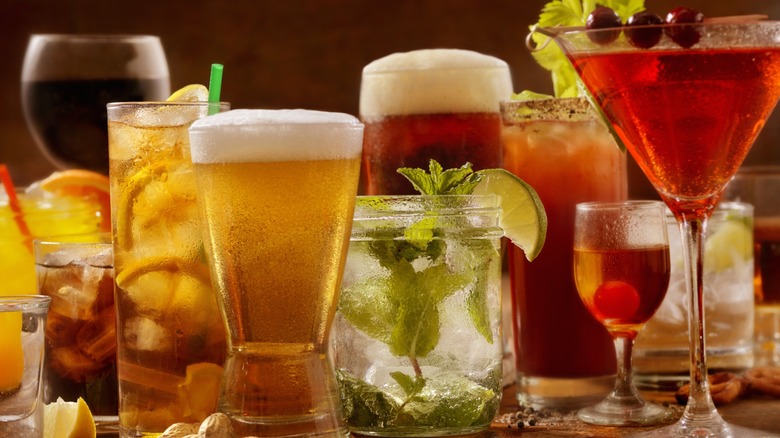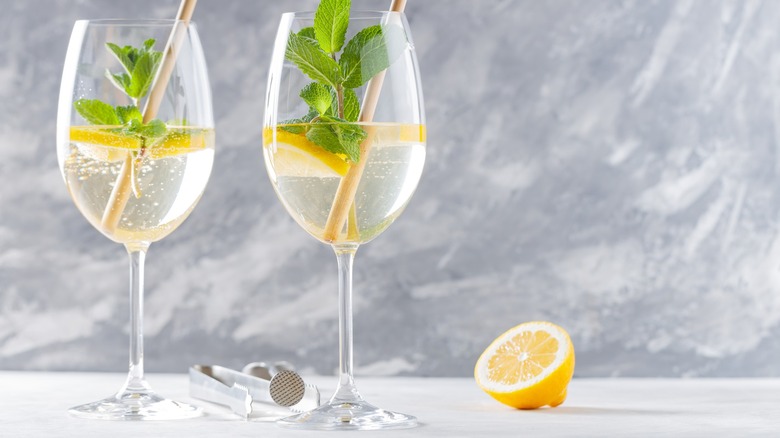What Is The Weakest Alcoholic Drink You Can Actually Buy?
In a supremely ironic twist for the thousands of craft breweries and distilleries that have opened across the country over the past decade, it's the non-alcoholic (NA) brews that are surging now and may possibly lead the industry one day. Indeed, in the past year alone, non-alcoholic beer, wine, and liquor sales leapt by 32% compared to a paltry 1% among alcoholic drinks, according to data compiled by PennState Extension. Producers have taken the hint, launching one new non or low-alcohol option after another, even in partnership with Harley Davidson.
That said, not everyone wants to fully foreswear the social lubrication, relaxation, and flavor that comes with alcohol and are asking what the weakest alcoholic drink you can buy is. The answer starts in NA beers. That's because the U.S. government defines them as having less than 0.5% alcohol. As a result, many of these drinks come with trace amounts of alcohol in them, unless they expressly claim to be "alcohol free" or 0.0% alcohol. It's the same story with "non-alcoholic" spirits , wine, and hard cider, which can all have up to 0.5% alcohol. For reference, that's about the same amount of alcohol found in regular kombucha.
Creeping up the alcohol by volume (ABV) level is easier with beer, where you can find "low-alcohol " and "extra light" versions — such as these 20 ranked low-alcohol beers — hovering around 3% ABV. The next step is light beers and low-ABV hard ciders, which measure around 3.5% to 4.5% ABV. Low-alcohol wines and spirits, on the other hand, start at ABV levels higher than regular beer, from 5% to 10% in wine and 20% to 25% ABV in spirits.
Other ways to lower alcohol content
If the flavor of non-alcoholic, low, or light alcohol drinks doesn't quite hit your bullseye, simply transform your strong alcoholic drink into the weakest one with a spritz. Adding club soda, seltzer, or sparking water dilutes the alcohol to the level you desire, and any ice will water it down more as it melts. The effect is doubled if doing it atop a low-alcohol spirit, which can have 25% less alcohol than regular versions. Europeans have been spritzing their alcohol for ages partly for this reason, as in Tinto de Verano in Spain, Fröccs in Hungary, and Hugo in Italy. Americans, too, are following suit with Texas Ranch Water and these absolute best low-alcohol cocktails.
Learning the math can also help you reach the desired low alcohol content. To determine the ABV of any drink you are making, divide the volume of alcohol by the total volume of the drink and times it by 100 to get the ABV percentage. Then, adjust from there. You might also consult a variety of ABV calculators online and a few smartphone apps that do the math for you. Simply input the numbers, and voilà. This way, you can make almost any spirit, wine, or cider you buy into the weakest alcoholic drink possible. It also points to perhaps the best tip to make that happen — do it yourself. Trusting others to maintain your ABV rarely works out. It can also help to understand the two ways low-alcohol beer is manufactured.

